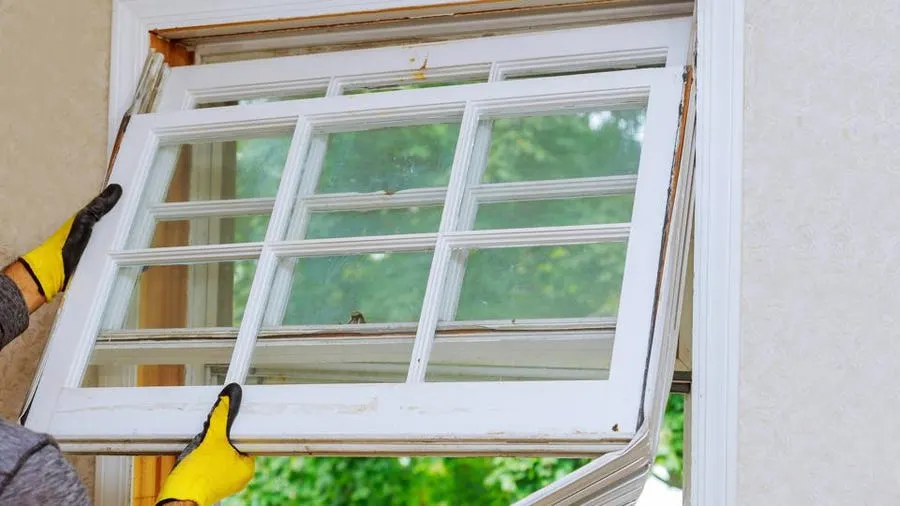When the temperatures drop, your windows can be a significant source of heat loss from your home. Old, drafty windows allow warm interior air to escape while letting cold exterior air infiltrate. Outdated Window Replacement with new insulated models creates an effective barrier to retain heat indoors.
Properly insulated windows make a dramatic difference in keeping your house warm and comfortable all winter. Let’s examine critical factors when choosing new insulated windows for window replacement to prevent winter heat loss and drafts.
- Multiple Glazing Layers
Standard single-pane glass offers an R-value of around 1, meaning minimal insulation. Double glazing with an air gap between two panes provides an R-value between 2 and 3. Triple glazing with two air spaces achieves an R-value of 3 to 5. The more layers, the better the insulation.
In cold climates, choose triple-glazed windows filled with argon or krypton gas to prevent the most significant heat loss. High-quality glazing seals have maintained the insulating air chambers for decades. Thermal imaging demonstrates the superior insulation of multi-layer glazing.
- Advanced Glazing Coatings
Specialized microscopic coatings on double and triple glazing improve insulation. Low-emissivity (Low-E) coatings reflect interior radiant heat inside rather than allowing it to escape through the glass. Low-E boosts the effective R-value by 30% to 50%.
Also, look for windows with “warm edge” spacer bars between glass panes. Plastic or foam spacers prevent heat conduction around window edges far better than metal spacers. Warm edge technology keeps perimeter areas of the window glass cozy.
- Inert Gas Fills
Airgaps between glazing assist insulation, but filling them with inert gases boosts performance. Argon fills improve R-values by over 20% compared to air-filled units. Krypton gas fill increases R-values by 35% or more over the air.
Krypton fill comes at a premium cost but provides the highest resistance to heat flow for the ultimate winter insulation. Verify gas fills meet specific percentage standards for optimal effect. Proper fill density shields against convection and conduction.
- Thermally Broken Frames
Traditional window frames conduct heat, lowering insulation levels. Thermally broken frames contain a plastic or composite thermal barrier to block this heat conduction. Vinyl, fiberglass, composite, and fiber-reinforced frames provide superior insulation over metal.
Thermal imaging demonstrates how much warmth escapes through metal versus thermally broken window frames. Upgrading to non-conductive frame materials makes a substantial difference in insulation performance.
- Weatherstripping
Weatherstripping consists of fuzzy seals around the window sash and frame, preventing air infiltration. Ensure new replacement windows have flexible, compressible weatherstripping around the openings and seams. Premium weatherstripping withstands degradation over time.
Inspect window weatherstripping annually before winter and replace any cracked or flattened sections. Proper weather seals block drafts, cold air leakage, moisture, dust, and noise for improved comfort. Adequate weatherstripping limits costly heat loss through air leaks.
- Certified Energy Star Products
Seeking out ENERGY STAR-rated window replacement ensures you get proven energy efficiency and insulation. ENERGY STAR models make a 20% or more significant reduction in heating and cooling costs.
Within the ENERGY STAR certification program, products that achieve a 30% or better energy efficiency improvement over minimum standards can qualify as “Most Efficient.” This designation indicates the highest-performing insulation products on the market.
- Professional Installation
A proper installation ensures windows operate smoothly and seal tightly. Any gaps or air leaks around the frame perimeter undermine insulation benefits. Certified installers follow meticulous protocols to seal the frames airtight and square within the opening.
A high-quality installation prevents outdoor air from infiltrating and interior air from escaping. Poor installation quality can reduce a window’s effective R-value by more than 50%. Qualified window installers are essential for optimal insulation and performance.
- Caulking And Sealants
As an added defense against air leaks, caulk around new window frames’ interior and exterior perimeter. Quality sealants and caulking duty fill crevices and gaps between the frame and the home’s weather barrier.
Take time each fall to examine window caulking and touch up any areas showing shrinkage, cracks, or gaps. Top-quality caulking and sealants are essential to fortify thermal insulation around frames. Proper sealing keeps cold air out hence guaranteeing comfortable temperature during the winter.




